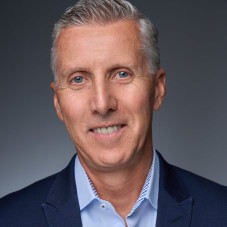Palo Alto, California, is where the Grateful Dead was formed in 1965.
Palo Alto has also been the birthplace of creative, innovative companies you are no doubt familiar with: Google, Hewlett-Packard, Facebook, Tesla, and PayPal.
And, like these other outfits, the Grateful Dead has weathered many changes and reinvented itself over the years. Such was the case in 1995, when its lead performer, Jerry Garcia, died. That could have been the end – and that wouldn’t have been a bad run, either. A 30-year run for a small business is quite a feat, considering the Bureau of Labor Statistics reports that 65% of new businesses fail within their first 10 years.
But the Dead, it seems, perseveres. The current rendition of the band is Dead & Company. (Yes, ironic.)
At this point, you may be thinking: “Am I reading the right magazine?”
Bear with me. There is a point to this.
Consider: In 2024, Dead & Company played 30 shows at the Sphere in Las Vegas – and grossed over $130 million. This 59-year-old organization still attracts fans. Forget persevering – this was thriving.
One of the band’s important characteristics was defined by legendary concert promoter Bill Graham.
Graham said: “They’re not the best at what they do; they’re the only ones that do what they do.”
This is not to question the band’s musical abilities. You can be the best, but before long, you’ll find that someone is better. But being “the only one”? That’s a sustained competitive advantage – arguably what has kept this 60-year-old institution prosperous.
This notion of being “the only one” is something that can be useful to your organization.
Yes, there is a great distance between a group of musicians and a manufacturing operation, but the objectives are the same: to attain and maintain a customer base.
Early in my career, when I ran a contract manufacturing operation in Rochester, New York, I realized that there were a whole lot of other contract manufacturing operations in the city.
But some of them were special. They did things others weren’t doing.
One company specializing in stamping work expanded to add secondary operations like welding and painting, providing its customers with the option to get something semi-finished. Many companies offered stamping, but this one added more.
Another had about a dozen machines. Its owner recognized that there were plenty of other companies in the area with about a dozen machines, so he decided to scale up the operation. With 30 machines, it had a capability that others with a dozen didn’t have. It could take on bigger contracts, and with those contracts, it could go to the bank and get better interest rates than it could when it was small.
Conversely, another company decided to stay small. It specialized in a grinding operation that no other company was doing. Consequently, it achieved greater margins on its work.
These companies deliberately decided to become “the only one” in their space, which separated them from the competition.
Many of those companies were in what I call “the death zone.” This doesn’t mean they were all dying. But it does mean that, without any distinctive or different characteristics to set them apart, companies had to slog it out day to day to keep things going. They would get average margins – at best. They were always on the edge, always working to keep things going, not shifting the paradigm but trying to hold on to the status quo.
While having advanced manufacturing equipment is important to creating a distinctive capability, there is something that cannot be overestimated when it comes to the success of an organization: The people.
You’ve got to get good people. You’ve got to keep good people.
There are two aspects to this, one hard and one soft. A quote from consultant Tom Peters is relevant here: “Hard is soft. Soft is hard.”
That is, your facility is hard: It is a physical space. Your organization is soft: It consists of relationships between people.
So, it is important to make your facility as clean, organized, and appealing as possible. Simple things, like epoxying the floors and getting the best workbenches, make a big difference. Make sure the facility looks like a place that is as cool to a young person as something in Palo Alto.
Doing those things is easy – the hard that’s soft.
But the soft part – the organization – is hard. Or at least something that you as a leader must work at.
If people are your most important asset, then what are the things you are doing – every day – to ensure that each person knows they are valued? Valuing people means doing things like making sure your staff realize they have a career path and that they are working with like-minded people who want to succeed collaboratively.
It is important to understand that you’ve got to consistently work at this. If you are “the only one” in terms of what you offer to the market and to your employees, then other companies are aware of what you are doing, so you have to shift the paradigm.
Which brings me back to Palo Alto. As David Packard, the “P” in “HP,” once said: “Take risks. Ask big questions. Don’t be afraid to make mistakes. If you don’t make mistakes, you’re not reaching far enough.”
Try to be “the only one.”
To read the rest of the Emerging Markets Issue of MT Magazine, click here.






